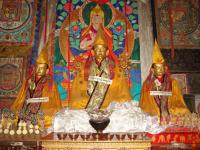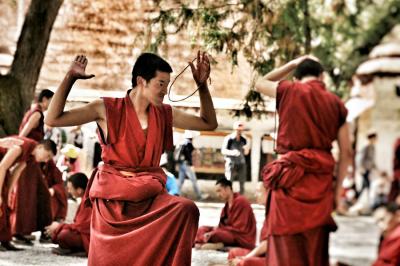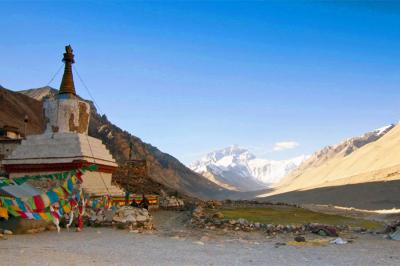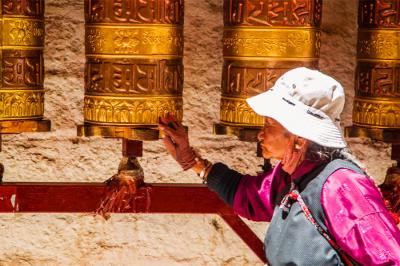Shalu Monastery
 Shalu' means 'new bud' in Tibetan Language. 25 km southeast of Shigatse, Shalu Monastery is the first temple of Shalu sect (there were about 10 different sects in history of Tibet). It features a perfect mix of Tibetan and Chinese architecture. The monastery was first built in 1087 by Jigzun Xerab Qoinnyai. In 1320, the well-known Abbot Purdain Renqen Zhuba was invited to be here managing the affairs of the temple. It is he who founded the Shalu sect of Tibetan Buddhism. In 1329, it was damaged in an earthquake. In 1333, he reconstructed the temple with the patronage of the emperor of Yuan Dynasty. The complexes we can see now are the original buildings since Yuan Dynasty, and it is one of the best preserved ancient temples in Tibet.
Shalu' means 'new bud' in Tibetan Language. 25 km southeast of Shigatse, Shalu Monastery is the first temple of Shalu sect (there were about 10 different sects in history of Tibet). It features a perfect mix of Tibetan and Chinese architecture. The monastery was first built in 1087 by Jigzun Xerab Qoinnyai. In 1320, the well-known Abbot Purdain Renqen Zhuba was invited to be here managing the affairs of the temple. It is he who founded the Shalu sect of Tibetan Buddhism. In 1329, it was damaged in an earthquake. In 1333, he reconstructed the temple with the patronage of the emperor of Yuan Dynasty. The complexes we can see now are the original buildings since Yuan Dynasty, and it is one of the best preserved ancient temples in Tibet.
Thanks to the prestige and efforts of Abbot Purdain Renqen Zhuba, more than 3000 monks were attracted to come here for further study. After his death, the monastery became an important epicentre of esoteric studies and psychic training for centuries. Shalu Temple became known throughout the Far East for its dedication to these philosophies and its enlightenment of the Buddhist faith. However, by the 1800s the monastery had become less influential and Tibetan scholars chose to study at the Samye monastery, which had grown to be one of the most politically powerful in the Tibetan lands by this time.
 Shalu Lakhang is the main structure of the monastery. On the ground floor, in the Tshomchen, Sakyamuni and his disciples are enshrined. The chapels flanking it house the Tanjur and the Kanjur books respectively. Chapels on the roof floor are typical Chinese blue tiled structures, housing Sakyamuni, Abbot Purdain, and Arhats Buddhas. Massive delicate and old murals cover the walls of the monastery, mostly depicting stories from the life of the Buddha.
Shalu Lakhang is the main structure of the monastery. On the ground floor, in the Tshomchen, Sakyamuni and his disciples are enshrined. The chapels flanking it house the Tanjur and the Kanjur books respectively. Chapels on the roof floor are typical Chinese blue tiled structures, housing Sakyamuni, Abbot Purdain, and Arhats Buddhas. Massive delicate and old murals cover the walls of the monastery, mostly depicting stories from the life of the Buddha.
Shalu has four treasures which are of notable value. One is a sutra board, which is 700 yearsold and cannot be reassembled once broken apart, a piece of sutra printed against the board is regarded as good luck. Another is a brass urn, which is usually covered with a piece of red cloth and sealed; the holy water may clean 108 filths and is changed every 12 years. The third is a stone basin, which was the washbasin of the builder Jigzun Xerab Qoinnyai dating back to 1040; and the fourth is a stone tablet, which was uncovered in the first construction of Shalu. The tablet displays a mantra which reads "om mani Padme Hum" and has four dagoba carved into it.
More Attractions in Shigatse


